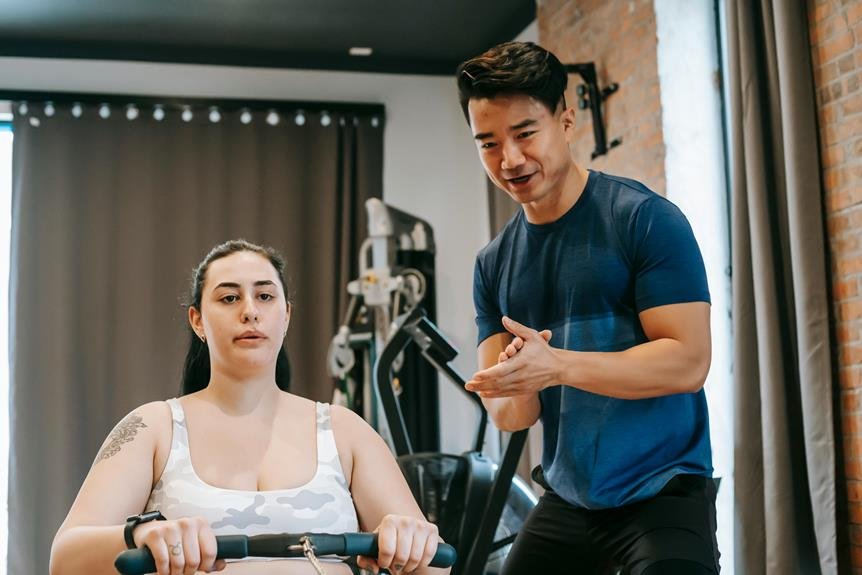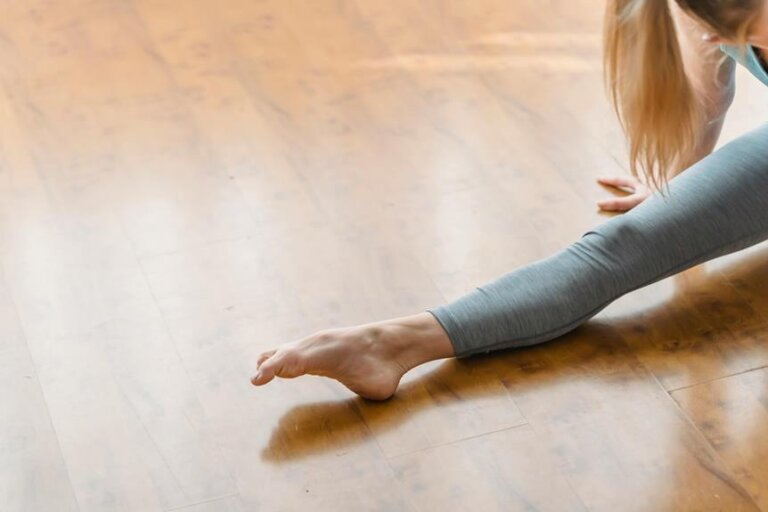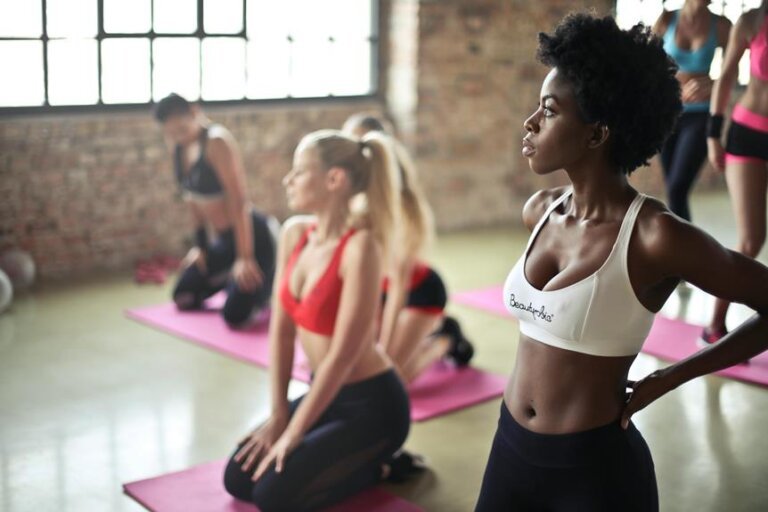Essential Fitness Tips for Women
Firm fitness foundations foster fabulous forms, don't they? It's important for you as a woman to understand your unique body type, tailor your exercises accordingly, and fuel your body with the right nutrition.
But there's more to it than just that. What could be the best ways to avoid common workout injuries? And how can you balance your fitness routine with a busy lifestyle?
Let's find out.
Understanding Your Body Type
Before diving into specific fitness tips, it's crucial to first understand your body type, as it significantly influences how you respond to different types of exercises and diets. You've probably heard of the three main body types: ectomorph, mesomorph, and endomorph. Ectomorphs typically have a lean build, long limbs, and small muscle bellies. If you're an ectomorph, you might struggle to gain weight or muscle mass.
On the other hand, mesomorphs typically have a medium build, with a balanced distribution of fat and muscle. If you're a mesomorph, you'll likely find it easier to gain or lose weight, and you generally respond well to most types of exercises and diets.
Lastly, endomorphs usually carry more fat, have a stockier build, and may struggle to lose weight. If you're an endomorph, you'll need to pay extra attention to your diet and exercise routine. Remember, understanding your body type isn't about fitting into a box, it's about gaining insight into what fitness strategies are likely to work best for you. So, take the time to understand your body, it's one of the first steps towards achieving your fitness goals.
Best Exercise Routines for Women
Regularly incorporating a variety of exercises in your routine can significantly improve your overall fitness and help you reach your health goals. A balanced regimen of cardio, strength training, and flexibility exercises can work wonders.
Cardio workouts, like running or cycling, can boost your heart health and burn calories. Aim for at least 150 minutes of moderate cardio or 75 minutes of vigorous cardio per week.
Strength training is equally important. It helps you build lean muscle mass, which in turn boosts your metabolism. You'll burn more calories even when you're not exercising. Try to fit in two or more strength-training sessions a week.
Don't forget about flexibility. Include exercises like yoga or Pilates, which can improve your body's range of motion and prevent injuries. Aim for two or more sessions per week.
Remember, the best exercise routine is the one you enjoy and can stick to. You're more likely to stay committed if you like what you're doing. So, explore different routines, find what you love, and make fitness a fun part of your lifestyle.
Stay tuned for the next topic, 'Nutrition for Optimal Fitness', where we'll discuss the role of diet in your fitness journey.
Nutrition for Optimal Fitness
Fueling your body with the right nutrients plays an integral role in achieving optimal fitness. You've got to consume a balanced diet rich in proteins, carbohydrates, and healthy fats. Proteins aid in muscle recovery and growth, carbs provide the energy you need for your workouts, and fats help absorb essential vitamins.
Remember, it's not just about what you eat but also when you eat. Having a light, nutritious meal or snack about an hour before your workout gives your body the fuel it needs to perform at its best. After exercising, eat protein-rich food within 45 minutes to aid muscle recovery.
Hydration is another key aspect of fitness nutrition. Dehydration can lead to fatigue and decreased performance, so drink plenty of water throughout the day, especially during and after your workouts.
Lastly, don't skip meals in an attempt to lose weight faster. It can lead to nutrient deficiencies and actually slow down your metabolism, making weight loss more difficult. Instead, focus on consuming nutrient-dense, whole foods that fill you up and fuel your workouts effectively. Remember, nutrition is just as important as the workout itself.
Avoiding Common Workout Injuries
As you embark on your fitness journey, it's essential to understand how to avoid common workout injuries. Your body's well-being is as crucial as the results you're striving for.
First, remember to warm up. It's easy to skip, but it loosens your muscles and increases your heart rate, preparing your body for the workout ahead. Ignoring it can lead to strains and sprains.
Next, understand your limits. Pushing yourself too hard can result in injuries like stress fractures or tendonitis. You're not in a race, so it's okay to go at your own pace.
Proper form is key. Incorrect posture or movements can cause serious injuries. If you're unsure, don't hesitate to ask a fitness professional. Don't let your ego get in the way of asking for help.
Rest days are equally important. Overexertion can lead to overuse injuries. Your body needs time to recover and rebuild.
Lastly, wear appropriate workout gear. Ill-fitting shoes can lead to foot and leg injuries while the wrong gear can cause chaffing.
Balancing Fitness and Busy Lifestyle
While taking care to avoid injuries is crucial, it's equally important to find ways to incorporate fitness into your hectic lifestyle. It's not about having extra time; it's about making time.
You can't let your busy schedule become an excuse not to workout. Start by setting realistic goals. If you can only spare 20 minutes a day, make the most of it. Intense, short workouts can be just as effective as long, drawn-out ones.
Consider convenient forms of exercise. Maybe you prefer a morning jog, an afternoon swim, or an evening yoga session. Choose what fits your lifestyle best and stick to it.
Incorporate exercise into your everyday activities. Take the stairs instead of the elevator, walk to the corner store instead of driving, or do squats while waiting for your dinner to cook. These little changes can make a big difference.
Frequently Asked Questions
How Does Age Affect a Woman's Fitness Regime?
Your age can significantly influence your fitness regime. As you age, your metabolism slows, muscle mass decreases, and joints may stiffen. Therefore, you'll need to adjust your workouts to maintain health and fitness levels.
What Role Do Hormones Play in Women's Fitness?
Did you know hormones greatly impact your fitness journey? They regulate body functions like metabolism, muscle growth, and mood swings. So, balancing them isn't just crucial for your overall health, but also your fitness goals.
Can Fitness Routines Help in Managing Menstrual Health?
Absolutely, fitness routines can significantly help manage your menstrual health. Regular exercise can reduce PMS symptoms, regulate cycles, and lessen menstrual pain. It's all about finding the right balance that suits your body's needs.
How to Maintain Fitness During Pregnancy and Post-Partum?
Absolutely! Prenatal yoga can improve sleep and reduce stress during pregnancy. Postpartum, it's important to ease back into exercise, focusing on gentle workouts. Always consult your doctor before starting any new fitness regimen.
Are There Specific Fitness Considerations for Menopausal Women?
Absolutely, during menopause, your body undergoes significant changes. It's crucial to maintain a balanced diet, incorporate weight-bearing exercises to strengthen bones, and keep up with cardio for heart health. Listen to your body's needs.
Conclusion
So, you've journeyed through understanding your body, discovering the best routines, prioritizing nutrition, preventing injuries, and balancing it all with a busy life.
Remember, fitness isn't a sprint but a marathon. It's about consistent effort, not overnight miracles. Keep pushing, keep trying, and don't let setbacks derail you. You're stronger than you think.
Your dedication to fitness isn't just about sculpting a beautiful body, it's about crafting a healthier, happier you.




